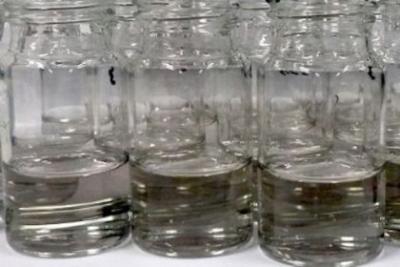Researchers at IMM-CNR (Institute for Microelectronics and Microsystems of the National Research Council), in collaboration with the CNRS, the University of Bordeaux and the University of Montpellier, have developed a new graphene production technique that uses degassed water, instead of surfactants to prevent graphene flakes from aggregating.

The new method enables graphene production in a convenient, easy and environmentally friendly way. The technique reportedly yields large amounts of single-layer graphene. The teams started with graphite, exfoliated under inert atmosphere in tetrahydrofuran, an organic solvent. The solution is then oxidized and transferred to degassed water. The absence of gases in the water prevents the single layers of graphene from aggregating and settling at the bottom, leaving the flakes dispersed in the solution.